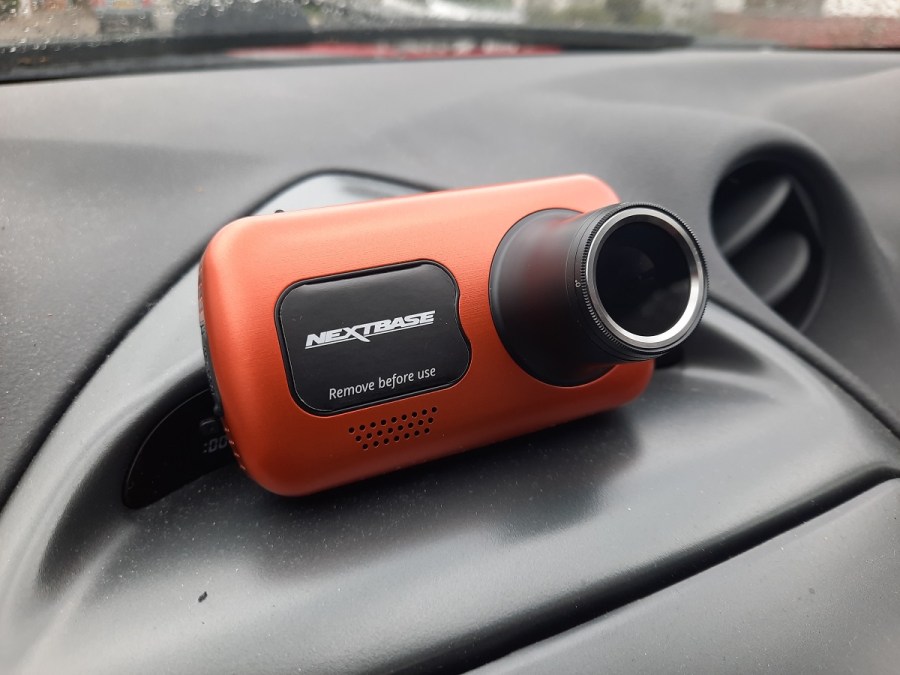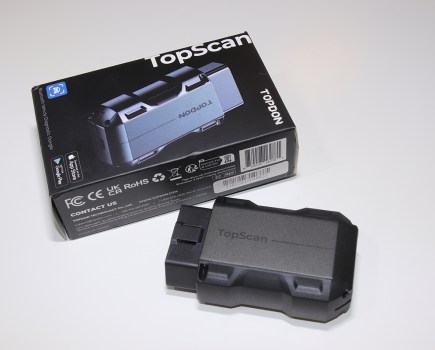Nextbase is one of the biggest players in the dash cam game, of that there is no question. So what can you expect from the flagship product in their range? This Nextbase 622GW review will hopefully answer that question for you.
How we tested the product
To get the best idea of what the 622GW is capable of, I went through every element of ownership to try and get a glimpse of what it’d be like to have the camera installed in my car permanently. That means going through the installation process, trying out all the features, and testing it at both day and night. For added insight, I also sourced one of Nextbase’s rear cameras to connect to the 622GW.
It’s also worth noting that I’ve got a good number of years of road experience under my belt, so I understand when a dash cam might be useful. As such, when we talk through the results of the footage later, I’ll attempt to pick out the small details which could matter most.
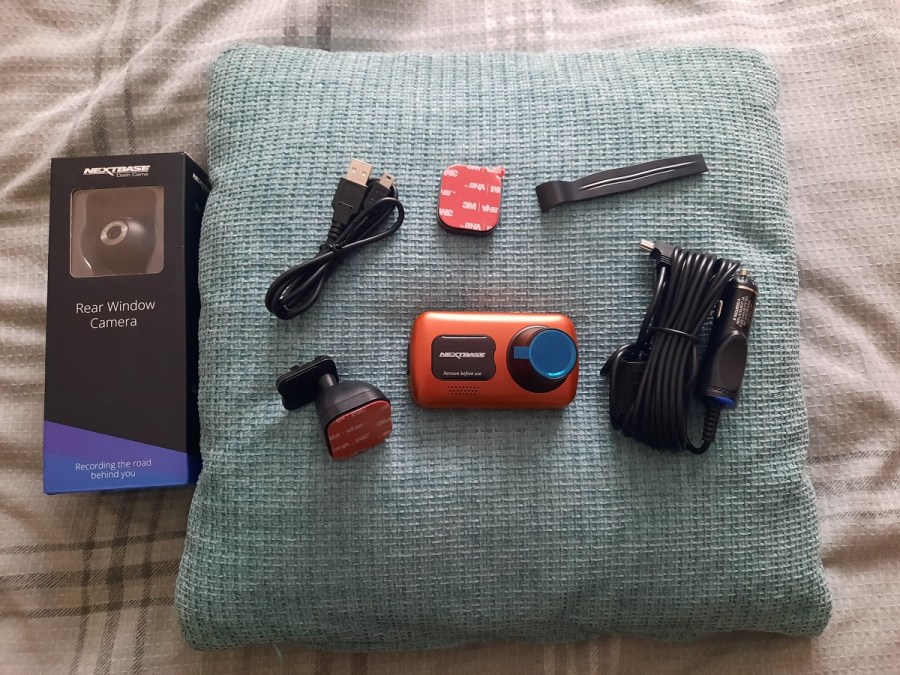
What’s in the box?
Just like the Nextbase 222, the first thing that the 622GW’s box greets you with is a window decal, reading, “WARNING – Protected by Nextbase Dash Cams”. It’s not to my taste, but you may view it as useful visual deterrent against thieves or road-ragers. There’s a quick-start guide as well, which includes the link to the full online user’s manual, should you need it. A bit of foreshadowing, there…
Elsewhere inside the box, you’ll find the camera neatly partitioned from its accessories. In this instance, Nextbase supplied me with a cool bronze-colored camera (which is either very rare, or very new), but you can also buy the 622GW in a more traditional black/grey if that’s not to your liking. The accessories contained within the box consist of a ‘Click&Go PRO’ mounting point, a 12V car power lead, and a trim tool to help with cable tucking. There’s a USB cable for initial camera charging too, and a spare adhesive back plate for the mount. Importantly, there’s no microSD card though – you’ll need to buy that separately.
Normally, the rear window camera is sold separately too, but the folks at Nextbase kindly threw it in with the 622GW for me to review. Inside that box, you’ll find the camera itself (with adhesive mount) and a connecting cable to link it up to the 622GW.
Nextbase 622GW Tech Specs:
- Resolution: 4K at 30fps, 1440p at 60fps, 1080p at 120fps
- Field of View: 140 degrees
- Extra Features: In-built Polarizing Filter, Alexa, What3Words, National Safety Portal, and much more…
Nextbase Rear Window Camera Tech Specs:
- Resolution: 1080p at 30fps
- Field of View: 140 degrees
- Extra Features: 6m-long connecting cable
- Compatible with: 322GW, 422GW, 522GW, 622GW
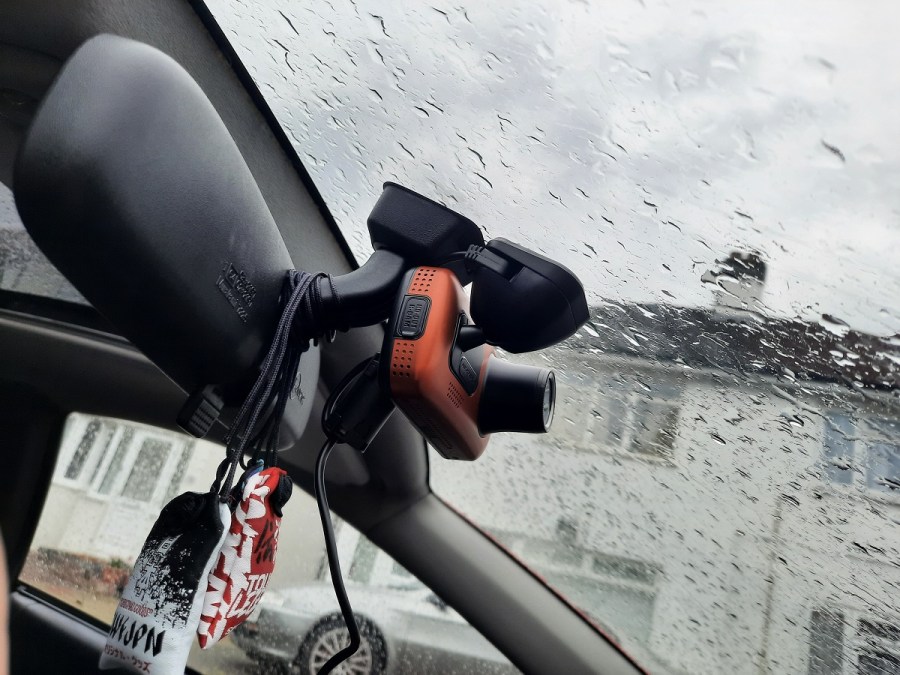
Positioning the camera
Right then, with the introductions out of the way, it’s time to get onto the next phase: installation. Happily, the Nextbase 622GW is a doddle to fit into your car. That Click&Go PRO mount is a brilliant bit of design that makes connecting and disconnecting the camera to the mount so easy that you can do it one-handed. That makes a nice change because honestly that part of the process is usually a bit of a faff. Whereas here, you don’t have to worry about being too forceful or not forceful enough – the magnets are strong enough to do most of the work for you.
As for the actual positioning of the mount and camera, you want to aim for a location that’s high up and central on the inside of your windscreen. For example, I chose a spot behind my car’s rearview mirror as you can see above. This not only stops the camera from distorting your field of view as a driver, but also allows the camera to pick up a wide spread of focus out the front of the car.
One thing that’s worth noting with these Nextbase dash cams, however, is the fact that the mounting point is to the side of the camera lens. As such, if you position your mount perfectly centrally, the lens itself will be off-center. That’s something to take into consideration when attaching the mount to your windscreen. The camera itself can also pivot on the mount, allowing you to line up its field of view exactly how you want.
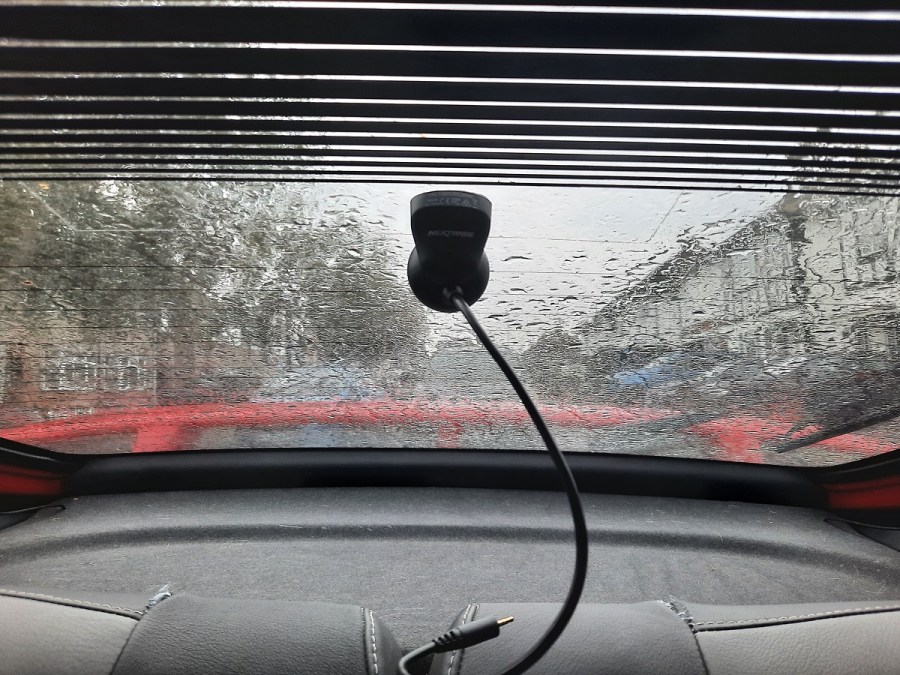
Rear camera fitment
Now that the front camera is sorted, it’s time to move onto the rear camera. The same best practice applies here – aim for a spot that’s high up and central to get the best view. Be careful not to have the lens’ view distorted by any sun strips your car might have though.
In my case, it was fairly easy to pick out the right location as my car’s rear wing has a central mount. As a result, all I had to do was more or less line the camera up with that wing mount. The camera itself is very straightforward to adhere to the glass thanks to its potent adhesive back plate.
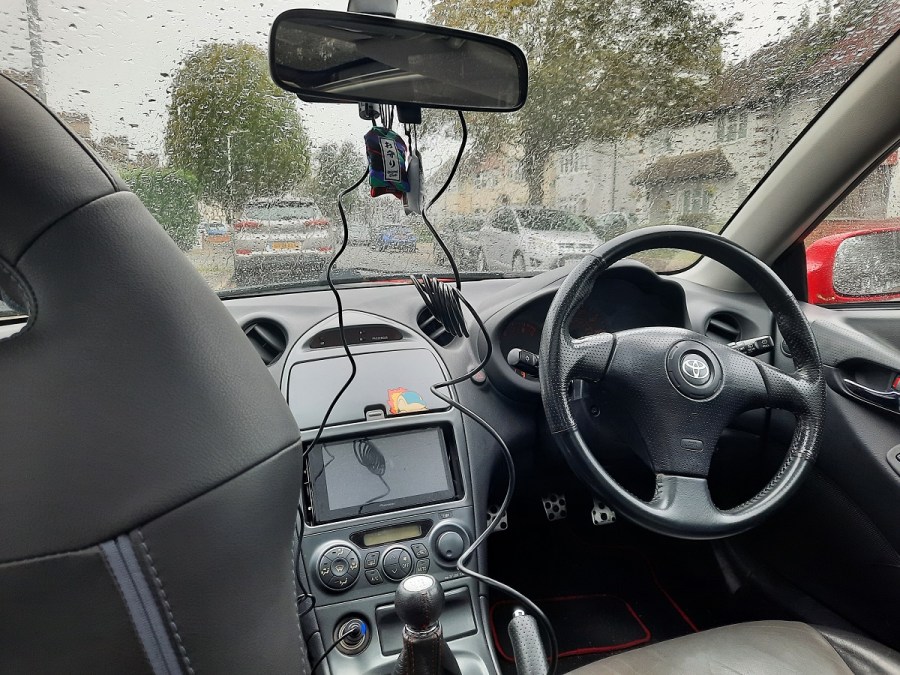
Wiring it all up
So, you’ve got your two cameras nicely positioned at either end of your car, but now you need to connect them. Fortunately, that’s easy too. The rear camera jack that you can see in the prior picture links up with a 6m-long cable which then plugs directly into the side of the Nextbase 622GW. Great, but now you’ve got one long cable running down the length of your car. And that’s even before you consider powering it all. For that, you need to take the supplied 12V car charger, plug it into your car’s port, and then make the connection with the 622GW’s mount. Again, an easy enough task, but one that leaves you with a long floating cable.
As such, if this was to be a permanent setup in your car, you’d need to get creative with how you tucked those cables away. The power lead can hide behind dash and pillar trim, but the rear cam cable will need to go through either your car’s headliner or its carpet. And I’ll be honest, that’s a fairly big job. Since these cameras would spend a maximum of a few days in my car, you’ll have to forgive me for leaving it all untidy and loose. You definitely shouldn’t copy my actions if you actually buy these though.
Daytime Front Camera Performance
It’s time to hit the road! Once the cameras were all set up, the next step was naturally to test their performance. So that’s exactly what I did. Unfortunately, on the day of testing, the weather wasn’t on my side. Instead of some nice sunny views, I’m afraid it’s all a bit grey and depressing. In a way though, that’s quite a good way of testing the camera’s ability to pick up details in dodgy conditions. After all, it’s never sunshine and roses all year round.
The Nextbase 622GW performs really well in these conditions, so much so that I wish I did have some more vivid 4K footage to show you. From an analytical perspective, all the important fine details are easily readable, if not while the video is playing then certainly when it’s paused. Stuff like vehicle license plates, street signs, and even identifiable features of the person waiting to cross the street are captured. It goes without saying that this not only makes for a great recreational dash cam, but could also prove highly useful in the event of legal case.
Daytime Rear Camera Performance
The Nextbase Rear Window Camera isn’t as powerful as the 622GW, so naturally it lacks some of the ultimate definition of its counterpart. That said, I think you’ll agree that it still picks up all the useful details. It’s a thumbs-up from me on both counts. Plus, as it piggy-backs off the front camera, it shares the 622GW’s GPS data capabilities.
Also, who knew British police had unmarked Volvo XC40s these days? Red ones, at that!
Night Performance
I think the biggest differences between the Nextbase 622GW and its lesser-spec counterparts become most apparent in the dark. Compare the footage above to that of the Nextbase 222 and it’s night and day (pun intended). Sure, there is still some glare, but it’s markedly less intrusive than that which you get with the 222. This is no doubt aided by the fact that the 622GW has a polarizing lens filter built-in, which is designed to reduce glare and interior reflections. Now, admittedly, you do still get a bit of reflection – you can see my car’s head unit screen reflected at the top of the glass, for instance. But overall, it’s nothing compared to the reflections you get in cheaper dash cams.
As for the picture quality itself, it’s really sharp at a glance, especially when looking at well lit stationary details like the Audi in front. But, it does still fall foul of the age-old night video problems. Once you start honing in on the small things like passing registration plates, you really have to strain to make sense of any of the letters. Most of the time its ineligible. But it’s unfair to criticize the 622GW for that, because frankly every dash cam has the same problem.
The rear camera has the same issues, but being a less powerful device, those issues are a little more exacerbated.
How can I view my footage?
There’s a few ways you can view the footage that your Nextbase 622GW captures. The first is simply by taking the SD card and using the adapter to insert it into your laptop/PC. From there, you can view the recordings on your desktop, which is what I did primarily. However, here’s the kicker. When I went to access those video recording files, all that was available was the final minute of footage before I turned the camera off, translated into front and rear perspectives, plus high definition versions and low definition versions. Evidently, this is pretty odd – and pretty useless from an ownership perspective. And I’m 100% sure that’s not what’s supposed to happen. So, naturally I tried to figure out what was going wrong.
I thought I had found the answer when consulting the user’s manual, which states you need a U3-grade SD card when using a rear camera alongside the front one. But alas, the SD card provided by Nextbase was indeed a U3 one. I then wondered whether I’d have more luck accessing the recordings via Nextbase’s cloud system – which you can visit from the MyNextbase Connect smartphone app. After setting up the app, I consulted the footage archive where, once again, all I could see was a handful of variations of the final minute of video recorded. The app also really struggled to sync with the camera, resulting in tedious waiting times. My next (and final) guess was to attempt to access any additional recordings through the MyNextbase Player app for PC. But again, same result.
Solving the problem
I decided to go out on a second journey to see if the problem might glitch itself away, but sadly that wasn’t the case. I also know it’s not an issue with the available space left on the memory card, because I was able to record additional footage with the Nextbase 222 on the same card!
I’m sure there is an explanation and an easy fix, but in the time I had available, I couldn’t find it. As I say though, Nextbase are a highly reputable brand, and for what it’s worth, I haven’t seen this problem mentioned anywhere else. Perhaps I got unlucky, or perhaps (more likely) I’ve just missed something really obvious in the settings or setup. In the event of this happening to you, I’ve got no doubt that Nextbase’s customer support team would be able to guide you to a resolution. In fact, Nextbase even offers a professional installation service to help avoid problems like this.
Extra features and functions
The Nextbase 622GW is jam-packed full of features. Perhaps more so than any other dash cam I’ve come across. Parking mode is a pretty common feature for a dash cam to have, whereby the in-built G sensor will detect any movement when your car is parked, promptly sparking into life to catch the miscreants that caused that movement. For that to work though, the dash cam needs a constant power source, which in turns mean you’d have to hardwire it into your car’s electronic system. The hardwiring kit you need for that is sold separately, and was not part of this review.
Elsewhere, major headlines include Alexa compatibility. For this to work, you have to link your phone and camera via the MyNextbase Connect app. Once you’re all set up, you can then use Alexa just as you would on other devices. Another really cool feature is What3Words. This is another third-party service built-in, which allows emergency services to locate you within an incredibly precise radius in the event of an emergency. That will work well in tandem with the camera’s automatic SOS function, which calls authorities if no movement is detected after a large G sensor trigger.
One of the more controversial features, meanwhile, is the National Safety Portal. This allows you to upload footage directly to a police-monitored cloud service, should you come into contact with any ‘dangerous’ drivers. Depending on your particular stance, this is either a great way for people to look out for each other, or a stingy way for people to rat each other out.
Verdict
The Nextbase 622GW is a fairly expensive dash cam, but in fairness it does pack a punch in terms of image quality. It’s also considerably more affordable than both Garmin and Thinkware‘s flagships. Installation is as pain-free as a dash cam can be – I love the Click&Go PRO mounts. It’s also got impressive levels of tech, with both Alexa and What3Words standing out as unique compared to the other dash cams I’ve experienced. Of course, it’s impossible to ignore the teething issues I had with file recovery/recording settings. But given more time, I’m confident that it’s an issue I’d have been able to get to the bottom of. As such, I feel that was as much about user error, as it was product failure.
So, would I recommend the Nextbase 622GW with an additional rear camera? Yeah, I think I would. I really do like a lot about this setup, from the way its footage looks, down to the layers of functionality it has stored within it. I reckon if you got yours working as it should, you’d be set for whatever the road can throw at you. There’s not much more I could’ve asked from it.

